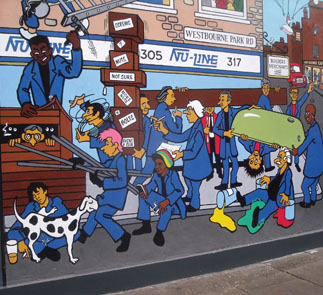Author: Thomas Almeroth-Williams
ISBN No: 978-1-5261-2635-1
Review date: 26/04/2024
No of pages: 328
Publisher: Manchester University Press, 2019
Publisher URL:
https://www.manchesteruniversitypress.co.uk/9781526126351/
Year of publication: 24/10/2019
Brief:
A new trend in the writing of history is the history of non-human animals. Hilda Kean for example wrote the The Great Cat and Dog Massacre, which despite the striking title is only partly about the mass ‘mercy’ killing of pets at the beginning of the Second World War, but rather a story of how ‘companion animals’ and people got along in the 1939-45 war in Britain.
Likewise City of Beasts: How animals shaped Georgian London, by Thomas Almeroth-Williams (Manchester University Press, 2019) tells the story of the capital in the 1700s and early 1800s, from the point of view of the animals – largely horses. It’s an original idea, well told.
The trade in stolen horses, and fraudulent sales such as hiding disease in animals, sounds like the worst of the second hand car trade today. Chapter seven of seven concerns watchdogs, and gives an insight into how householders and businesses alike sought to – because they had to – protect their property in an age before the intruder alarm, and CCTV to do at least some of the work.
As Almeroth-Williams sets out, yard dogs and house dogs of every kind were protecting property, just as dogs were used by man to herd sheep and hunt foxes in the countryside. Before London had the Metropolitan Police, night watchmen appointed by vestries patrolled streets on regular beats; they dealt with the homeless and drunks. The state and victims alike offered rewards for the return of stolen goods. As that implies, the watch wasn’t that successful in preventing crime, or perhaps there were too many desperate criminals about: “Home owners had to look to themselves.” (page 190)
As the period went on and London developed in size and sophistication, the city saw ‘ever more fastidious security regimes’, things that we can recognise today – shutters, locks, bolts and chains, and valuables in trunks and closets, locked and concealed.
A word on sources; thanks to the digitalisation of newspapers, the author could run searches, for example on the word ‘barking’, to read of court cases of interrupted burglaries; and he looked at the reports of Old Bailey trials. The sources show that dogs were companions for owners, but also there for security; ‘a deterrent and an alarm’.
What did these guard dogs actually do? Did they bite? The evidence for that is rare, but in one court case a member of a robbery gang throws a dog a piece of met, to distract the animal for long enough after an accomplice is bitten, showing either presence of mind or an awareness among robbers that dogs could turn nasty. It’s proof too that non-human animals made thieves alter their plans, whether to recruit insiders such as servants to quieten the dog, or to knock it out, by violence or poison.
As for the breed of dog, Almeroth-Williams describes them as (page 195) ‘a motley assortment of lap dogs, terriers, hunting dogs, mastiffs and mongrels’, as even quite small dogs could raise the alarm. What they did have going for them, as now, was their ‘acute sense of sight, hearing and smell’, and sleeping humans did rely on them. That goes for shopkeepers and the wealthy, and suburban farmers, and warehouses; consider that the first police force was not the Met, but for London dock warehouses. There’s overlap here with the work of Dr David Churchill, author of Crime Control and everyday life in the Victorian City: the police and the public (Oxford University Press, 2017).
Did the guard dogs work? After barking, dogs may have backed away, after barking, but the sensible burglars steered clear of properties known to keep such animals. The book suggests that owners did selective breeding, to make better watch dogs. There is a limit to what the sources can tell us; such as, what training if any did owners give – to bite, and if so where?!
Such use of dogs was not new in the city; Samuel Pepys in his famous diary in 1660 complained that he was kept awake at night by a neighbour’s dog barking; and there was even a case of a dog being hung as a nuisance.
Courts, too, might take a ‘dim view of dogs that were let loose unmuzzled’ (page 208), a sign that even 250 years ago society was debating what a property holder could do legally when faced by an intruder. ‘For many Londoners owning a dangerous dog was well worth the risk to protect their property and families.’
The book concludes (pages 221-2) that non-humans were ‘intrinsic to London’s emergence as the world’s first modern metropolis’, whether literally providing horsepower or showing signs of intelligence. How the non-human animals behaved, affected how Londoners moved, worked, travelled and protected themselves.
Photo by Mark Rowe; street art, west London









